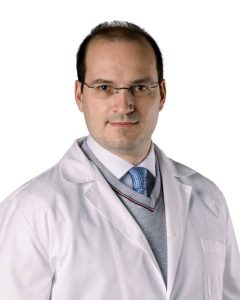Epilepsy is a chronic disorder, with the main symptom being repeated, unprovoked seizures. Seizures occur due to a sudden increase in electrical activity in the brain. This causes a temporary disturbance in the messaging systems between brain cells.
When most brain segments are involved, then we are talking about generalized seizures that often occur with tonic-clonic spasms throughout the body. But there are also crises that occur only with loss of consciousness or with confounding situations.
There are different types of seizures, and each epileptic crisis is unique for each patient.
If an epileptic seizure lasts about half an hour, the patient must be transferred to a hospital environment, because he is at risk of cerebral edema.
Diagnosis
A patient with at least one epileptic crisis visits the Neurologist to determine if it is an epileptic syndrome, or another condition that caused the loss of consciousness and convulsions.
The Neurologist will conduct an electroencephalogram to investigate the causes, which may be idiopathic, that means of unknown cause or due to a well described syndrome.
Further investigation and tests may be necessary to clinch a diagnosis.
An epileptic crisis may be:
- Focal, when it involves part of a brain hemisphere or
- Generalized
The first treatment option is antiepileptic treatment, with very good results for many patients. Antiepileptic drugs reduce the recurrence of seizures. Patients can often live an active and frequently normal life.
In medication refractory epilepsy, the treating team will attempt to localize the epileptic source
- So that it can be removed through surgery
- Or if this is not possible other options can be explored such as implantation of vagus nerve stimulation (VNS) or deep brain stimulation (DBS) of specific brain structures like the anterior thalamic nucleus. These types of surgeries are performed by a specially trained neurosurgeon after discussion with the treating neurologist.
Dr C. Sidiropoulos assesses patients for placement of deep brain stimulation for epilepsy in cooperation with an epileptologist and a highly skilled neurosurgeon, and undertakes post-operative programming of the neurostimulator.


